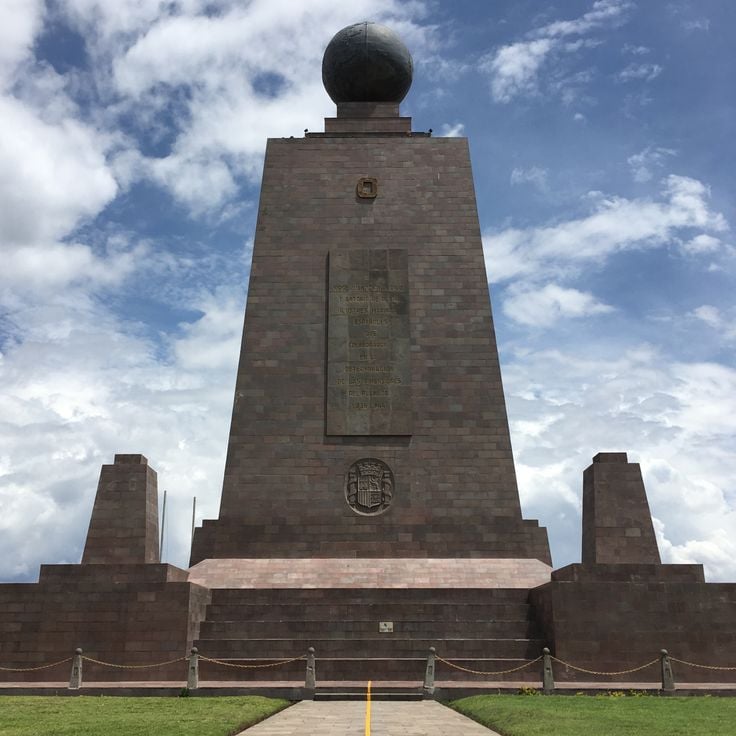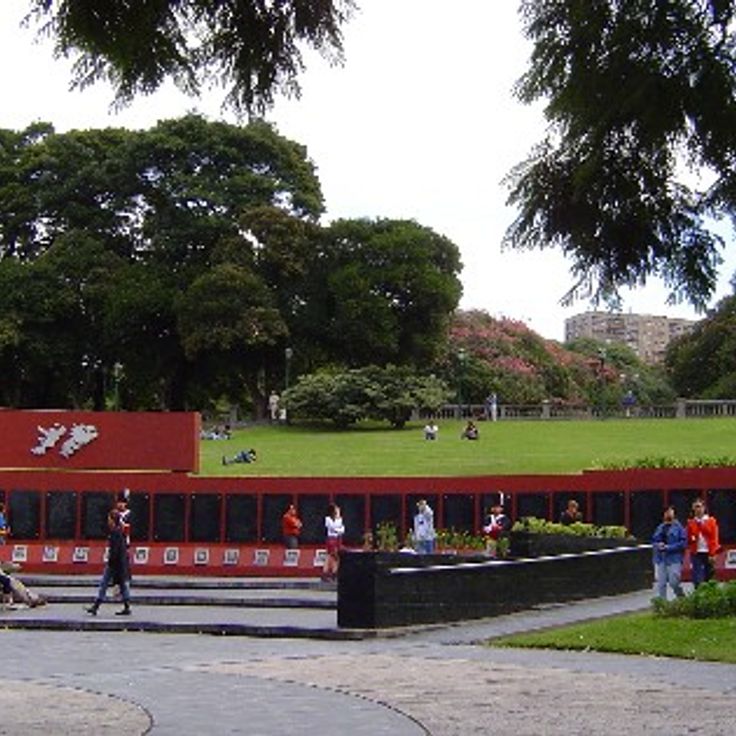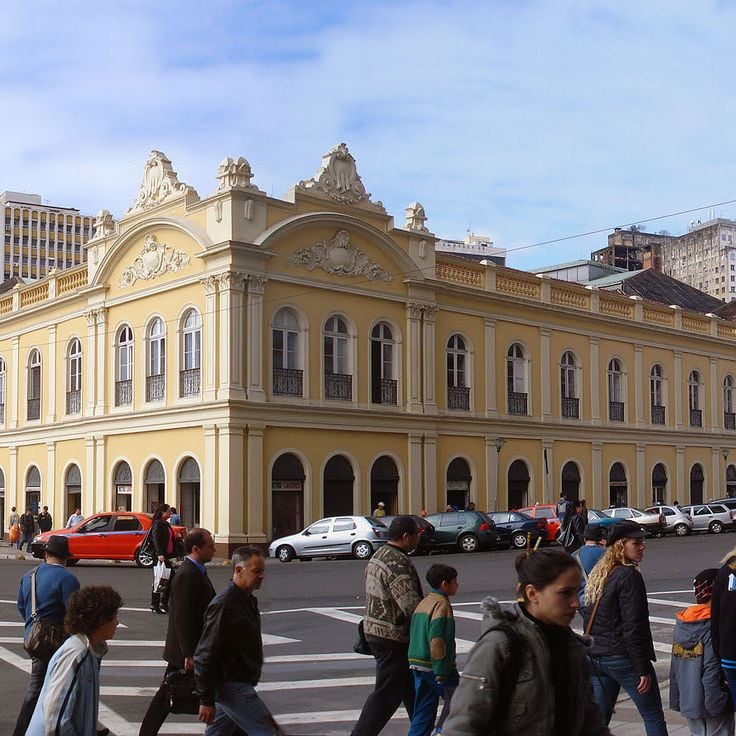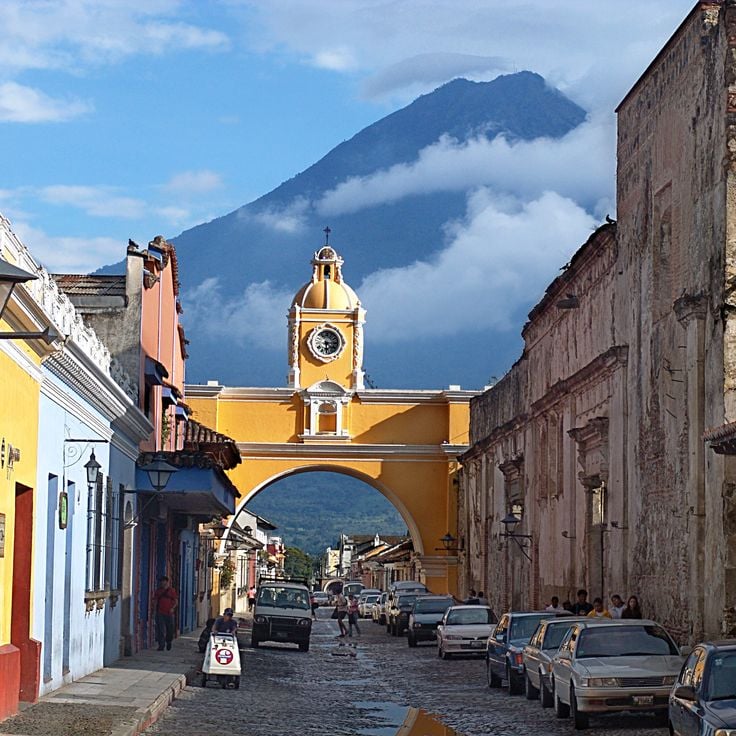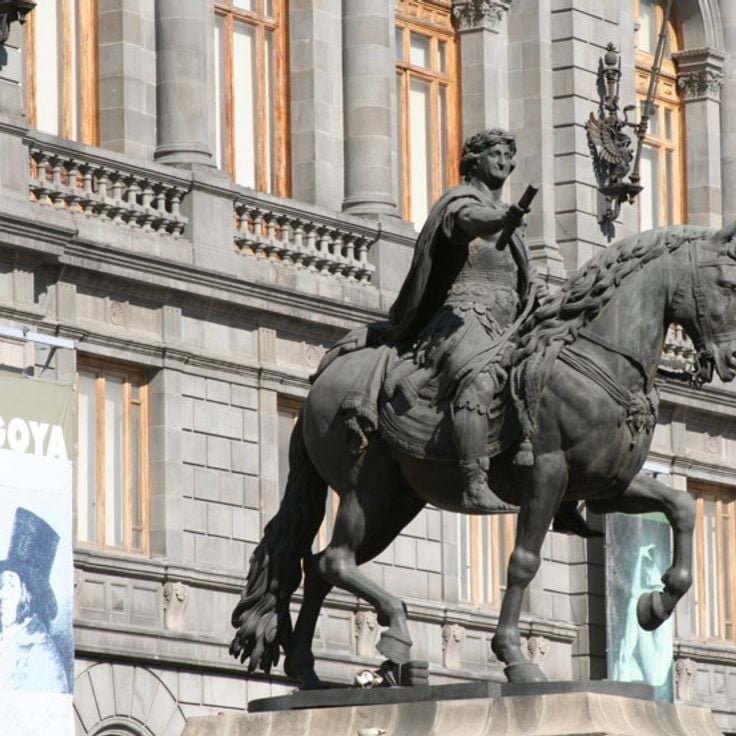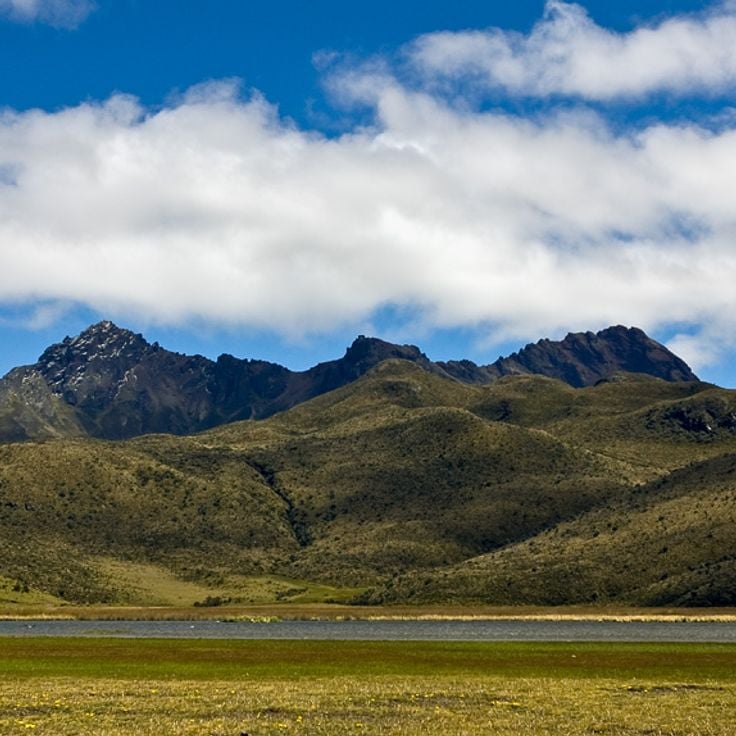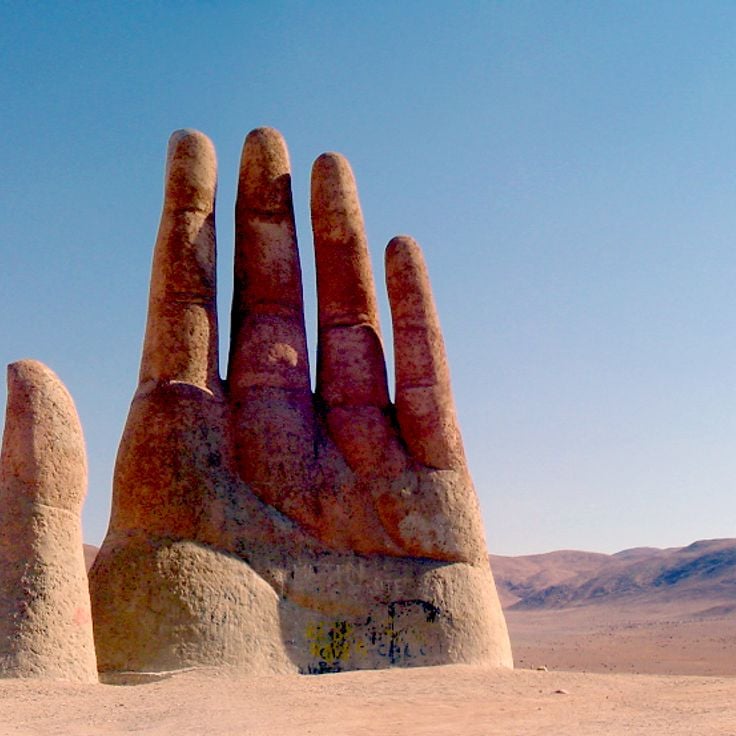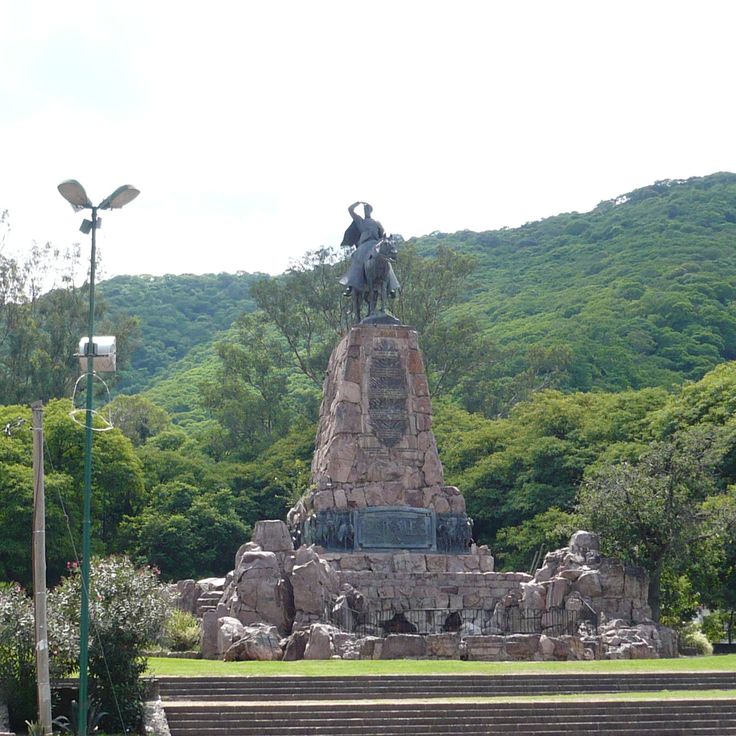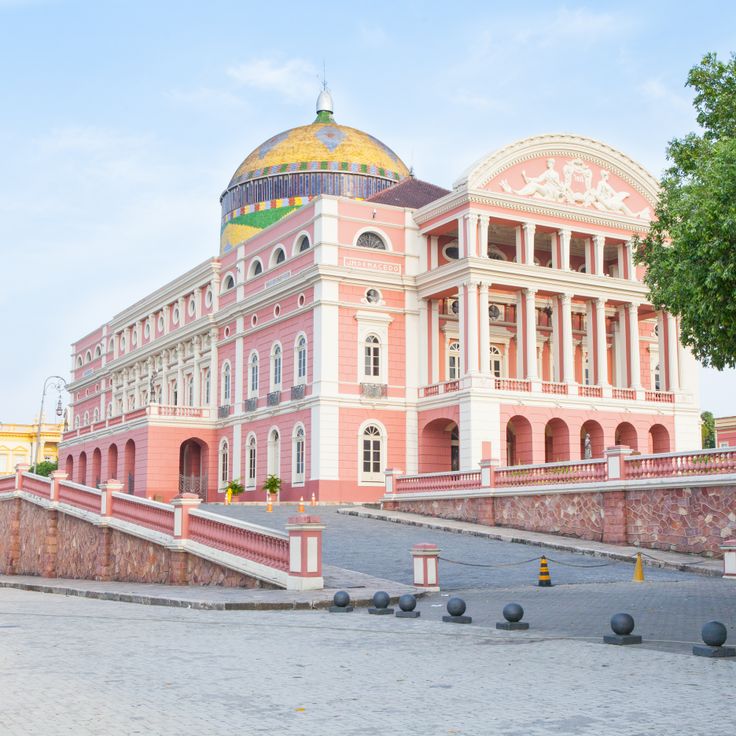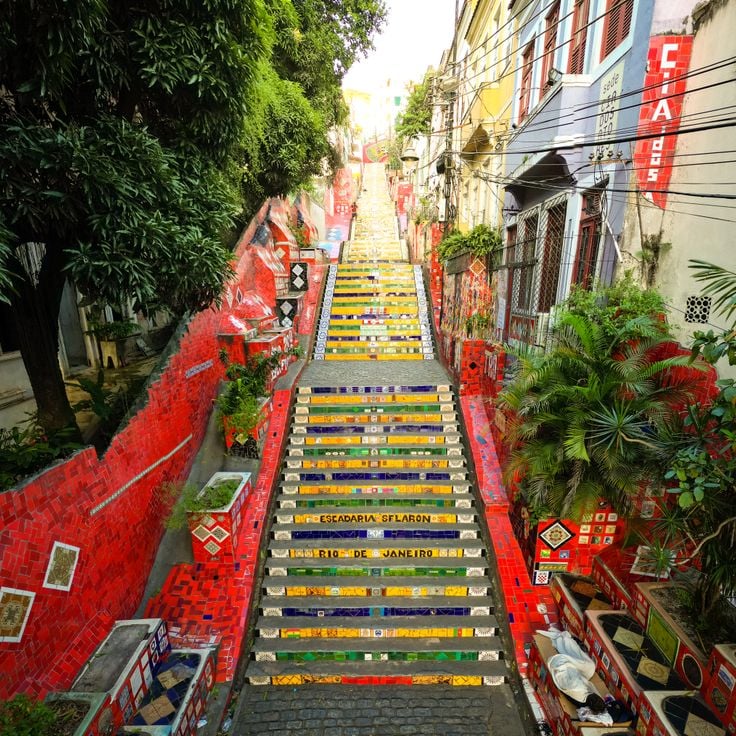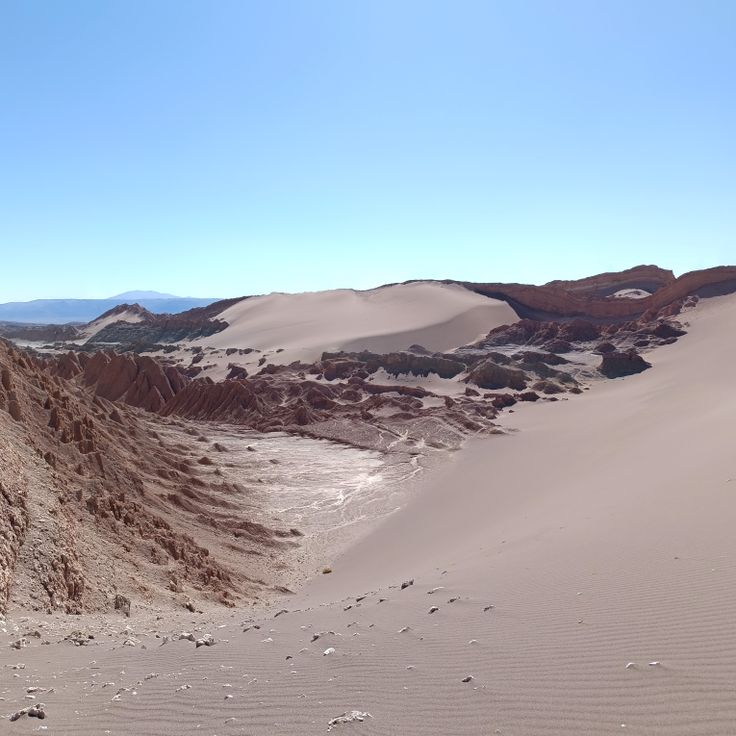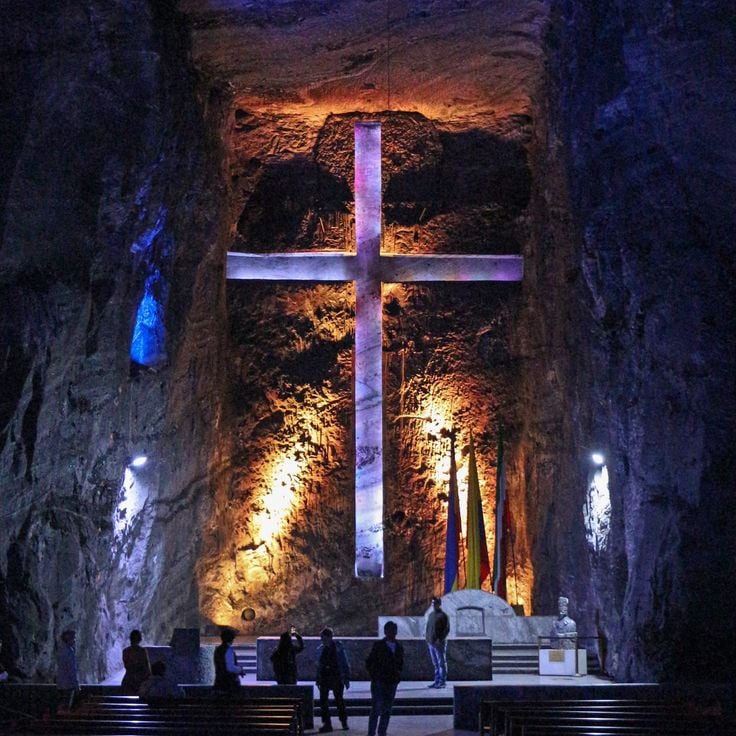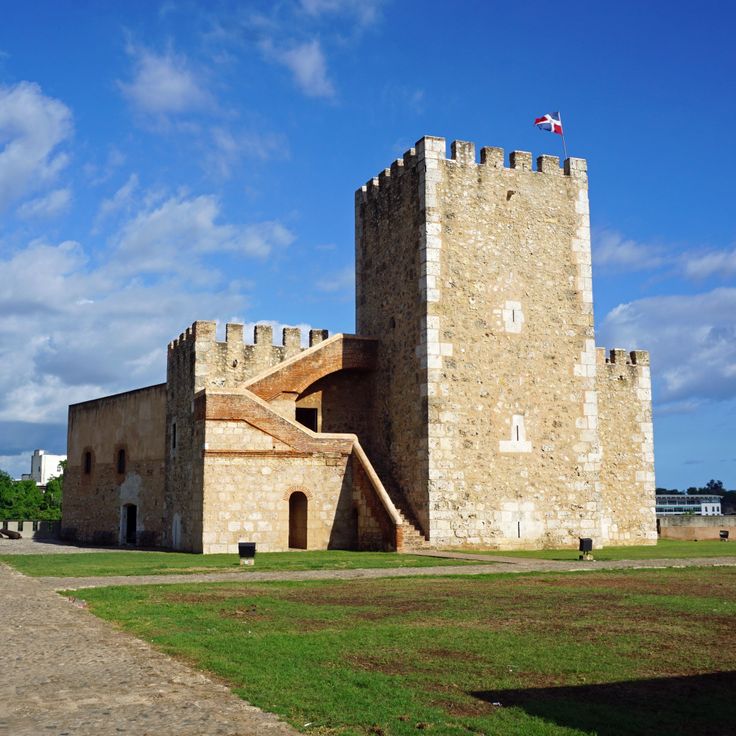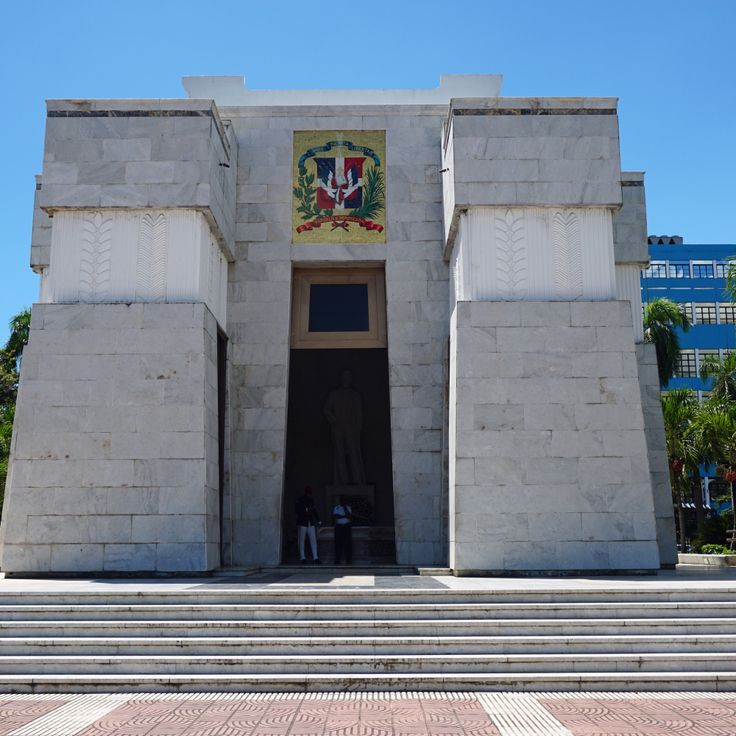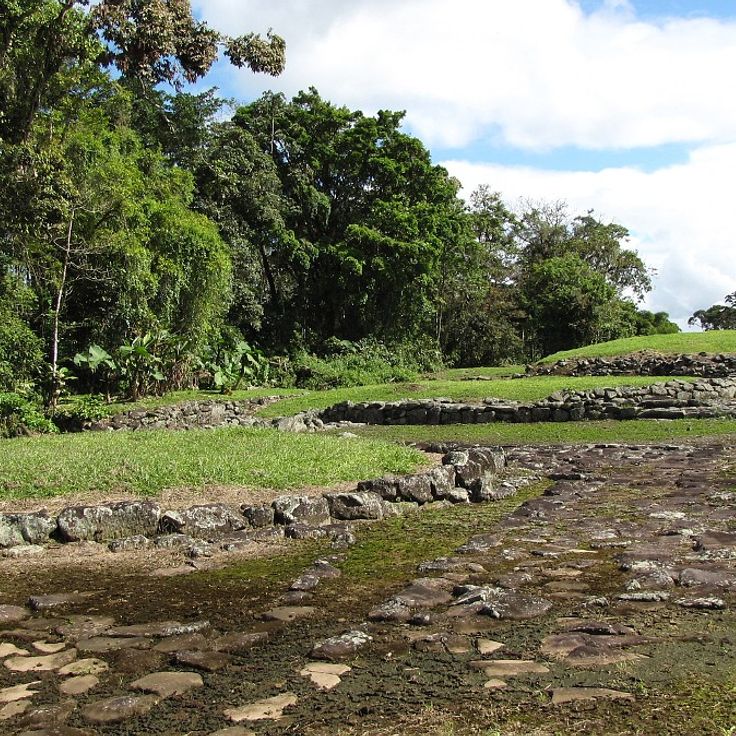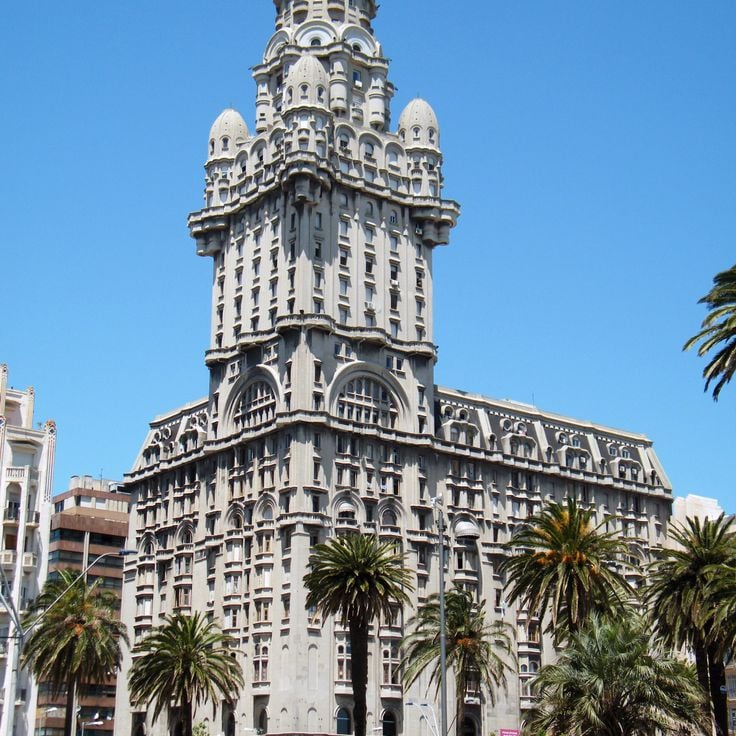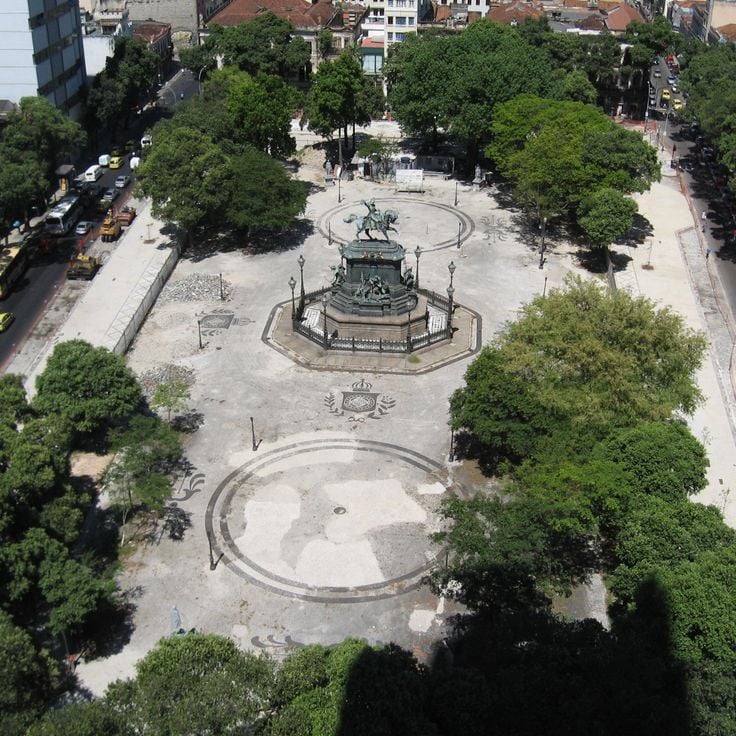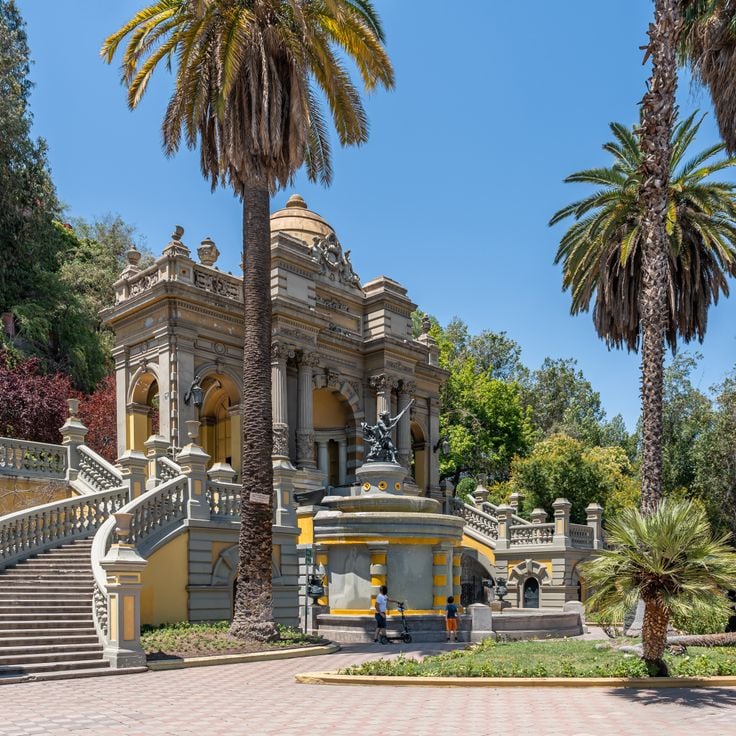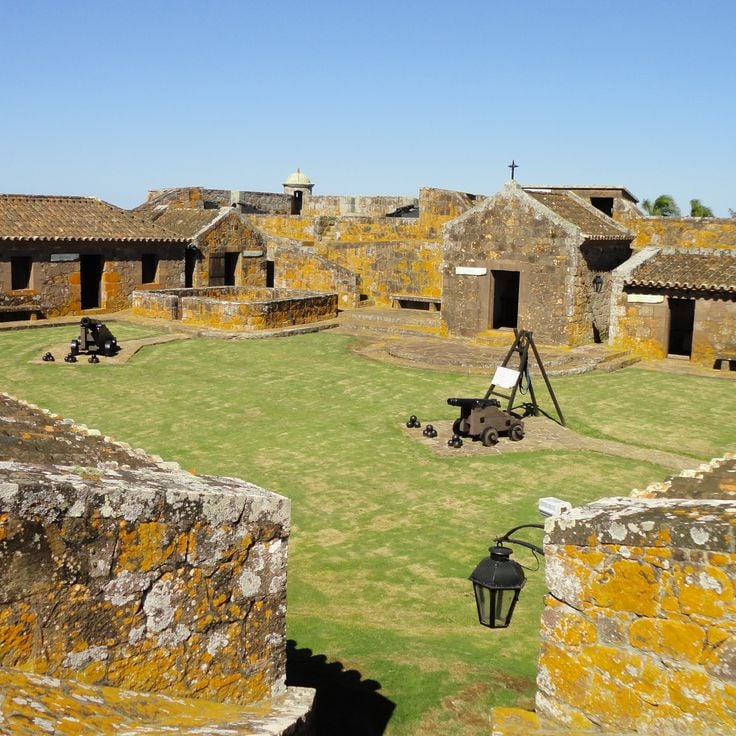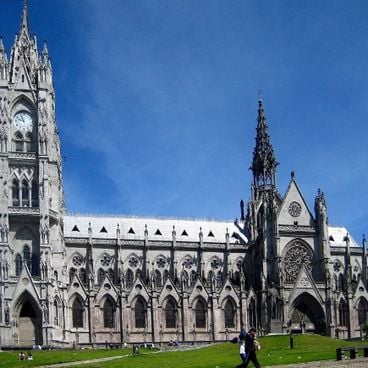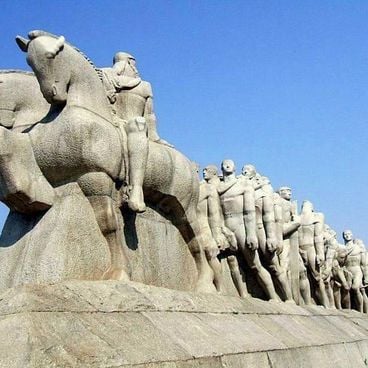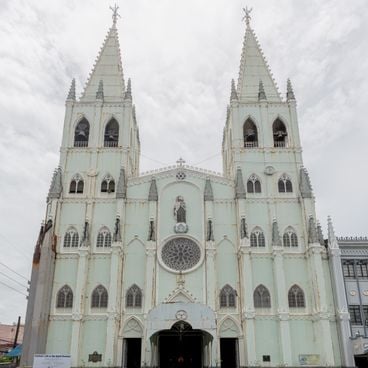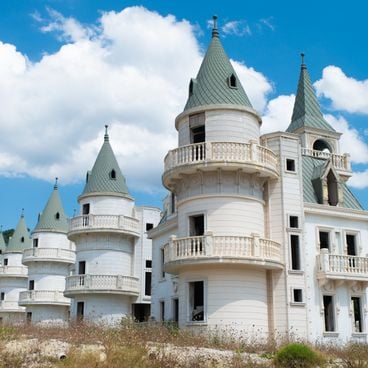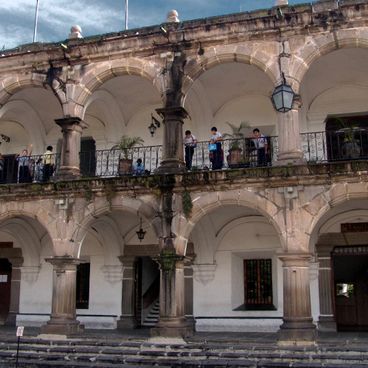South America holds a remarkable collection of monuments that span centuries of human history. These sites range from ancient ruins and colonial churches to modern sculptures and public squares. Walking through them, you encounter the stories of pre-Columbian kingdoms, Spanish colonizers, and contemporary artists who have left their mark on the continent. Some of these places stand out for their historical importance or unusual locations. The Santa Catalina Arch in Antigua, Guatemala, dates back to the 1600s and once joined two convents together. In Porto Alegre, Brazil, the Public Market still functions as it did in the 1800s, bustling with daily commerce. The Hand in the Desert near Antofagasta, Chile, is a striking modern sculpture that emerges from the Atacama Desert's barren landscape. Near Quito, Ecuador, the Middle of the World Monument marks the equator's path, while in Lima, the Christ of the Pacific watches over the city from a hillside. These monuments matter because they show how South America has changed and developed over time. Each one reveals something about the people who built it and the era it comes from. Whether you are standing before an ancient fortress, exploring a colonial church, or viewing a modern creation, these places offer a window into the continent's layered past and ongoing cultural expression.
The Middle of the World Monument consists of a tall stone tower marking the position of the equator. The attached museum documents the history of 18th-century geodesic expeditions that contributed to determining the shape of the Earth. Visitors can explore the geographic importance of this line on different levels of the tower.
The Christ of the Pacific is a 37-meter white statue erected on a hill above Lima. The sculpture stands in the Miraflores district and offers views over the Pacific Ocean. This religious representation was inaugurated in the 1970s and reflects the Catholic tradition of Peru. The elevated position allows visitors to observe both the statue and the coastline.
The Monumento Cenotaph is a marble and bronze memorial dedicated to the fallen soldiers of the Argentine armed forces. The structure was erected to honor the memory of those who died in various military conflicts involving Argentine troops.
The Porto Alegre Public Market was built in the 19th century and spans two floors. This building houses 144 shops, restaurants and stalls offering regional products from Rio Grande do Sul. The market hall has served as a commercial center and meeting place for residents and visitors since its opening.
This granite monument was erected in 1959 and stands 18 meters tall. The structure symbolizes the victory of the Cuban Revolution and is located in the historic center of Havana. The monument displays revolutionary figures and symbols commemorating the political upheaval of the late 1950s.
The Arco de Santa Catalina is a stone arch bridge from the 17th century that originally connected two parts of the Santa Catalina convent. The structure allowed nuns to cross the street without leaving the cloister. The yellow arch now frames views of the Agua Volcano and serves as a landmark of the colonial city of Antigua.
El Caballito de Tolsá is a bronze equestrian statue of King Charles IV of Spain, created by sculptor Manuel Tolsá in 1803. The monument stands in the historic center of Mexico City and represents one of the significant works from the colonial period. The statue depicts the king in a Roman toga on horseback and is considered one of the finest examples of neoclassical sculpture in Latin America.
Rumiñawi is a 4712 meter high stratovolcano located in the western section of the Ecuadorian Andes north of Quito. This mountain belongs to the country's volcanic chain and displays typical characteristics of a composite volcano with its conical shape. The volcano bears the name of a historical general from the time of the Inca conquest.
The Hand in the Desert is an 11-meter high concrete sculpture by Chilean artist Mario Irarrázabal from 1992. The artwork stands isolated in the Atacama Desert, approximately 75 kilometers south of Antofagasta along the Pan-American Highway. The hand emerging from the sand represents human vulnerability and solitude in the barren landscape.
The Benito Juarez Monument in Mexico City honors Mexico's first indigenous president, who governed from 1858 to 1872. He established the separation of church and state, reshaping the modern Mexican nation. This monument marks a turning point in Mexican history and pays tribute to a leader who fundamentally transformed his country.
The Güemes Monument was erected in 1931 and honors General Martín Miguel de Güemes, who played a central military role during Argentina's war of independence against Spain. The statue stands on a tall pedestal and depicts the general on horseback. This monument is located at the foot of Cerro San Bernardo and has become an important symbol of regional identity.
The Virgin of Peace Monument is a religious concrete statue constructed in 1983, measuring 46.7 meters in height. This sculpture stands on a hill at 1700 meters above sea level and ranks among the tallest Marian statues in South America.
The Glaciarium is a scientific museum dedicated to glaciology and ice research. This facility presents interactive exhibitions about the formation of Patagonian ice fields, glacier characteristics, and the documented effects of climate change on these natural formations. The museum includes several thematic sections that explore geological processes and the history of glacier research in Patagonia.
The Amazon Theatre was constructed in 1896 during the rubber boom period in Renaissance architectural style. This opera house used materials imported from Europe, including Italian marble for the staircases, French glass for the mirrors and chandeliers, and Scottish steel structures. The dome displays a mosaic featuring the colors of the Brazilian flag.
The Selaron Steps connect the Lapa and Santa Teresa neighborhoods through 215 steps. Chilean artist Jorge Selarón decorated this public staircase with tiles and ceramic pieces from over 60 countries. The work began in 1990 and continued for more than two decades.
Moon Valley extends across the Atacama Desert region and presents rock formations, salt caves and mineral deposits shaped by centuries of wind erosion. This geological formation is characterized by its rugged surface and the various rock layers that give the terrain its distinctive appearance.
The Salt Cathedral of Zipaquirá is located 180 meters underground in a former salt mine. This Catholic church was created within the mine's tunnels and chambers by carving corridors, chapels, and religious symbols directly into the halite rock. The structure includes three naves, a Way of the Cross with fourteen stations, and an altar area. Lighting highlights the geometric forms and natural structure of the salt rock.
La Puerta del Diablo is a natural rock formation rising to approximately 1000 meters elevation. This geological feature consists of two massive rock walls forming an opening. From this point, views extend across the capital San Salvador and Lake Ilopango. The formation sits in the volcanic highlands south of the city and attracts visitors seeking panoramic views over the valley.
Fortaleza Ozama is a military fortification built in 1502 from stone. This fortress features an 18-meter tall watchtower and massive defensive walls that extend along the Ozama River. It served to protect the city of Santo Domingo.
The Panteón Nacional de los Héroes is a mausoleum located in central Asunción that houses the remains of Paraguayan soldiers and important historical figures. Construction began in 1863 and was completed in 1936. The architecture follows neoclassical principles with a central dome and an ornate entrance portal. The building serves as a national memorial for those who fell during the War of the Triple Alliance and the Chaco War.
The Salar de Uyuni Train Cemetery gathers several dozen locomotives and wagons from the late 19th and early 20th centuries. These trains transported minerals from regional mines until mining operations ceased in the 1940s. The vehicles now stand abandoned in the desert, a few kilometers from the town of Uyuni, displaying the effects of corrosion caused by the saline climate.
El Ángel de la Independencia is a victory column located on a roundabout along Paseo de la Reforma. The monument was inaugurated in 1910 to commemorate Mexican independence. The column is topped with a gilded statue of the winged goddess Victoria and stands 45 meters tall.
The Altar de la Patria is a marble monument erected in 1976 in Santo Domingo. It houses the remains of the three founding fathers of Dominican independence: Juan Pablo Duarte, Francisco del Rosario Sánchez and Ramón Matías Mella. The monument serves as a national mausoleum and memorial dedicated to the heroes of the 1844 independence struggle.
The Monumento Nacional Guayabo is an archaeological site dating from 1000 CE that includes stone roads, water conduit systems, house foundations and circular platforms which served as bases for ceremonial buildings.
The ancient city of Caral covers 66 hectares and includes six large pyramid complexes, several amphitheaters, and extensive residential districts. The settlement was built approximately 5000 years ago and represents one of the oldest urban civilizations on the American continent.
The Palacio Salvo was completed in 1928 and reaches a height of 95 meters with its 27 floors. This Art Deco building was South America's tallest structure at its inauguration and continues to define Montevideo's skyline along the Río de la Plata.
Praça Tiradentes serves as the historic center of Ouro Preto and bears the name of Brazilian national hero Joaquim José da Silva Xavier. This central square is dominated by a bronze statue commemorating the leader of the failed Minas Gerais conspiracy of 1789. Buildings from the 18th century with white facades, wrought iron balconies, and tile roofs line the square, documenting the architectural legacy of the Portuguese colonial period.
The Intiñan Solar Museum is located on the equatorial line and presents experiments related to geographic and physical phenomena at this particular position. The exhibitions provide information about the pre-Columbian cultures of Ecuador, their astronomical knowledge and traditional ways of life. Visitors can participate in interactive demonstrations about the Coriolis effect, water drainage and balance on the equatorial line.
Cerro Santa Lucía is a hill in the center of Santiago equipped with stone walls, staircases, and several observation points that provide views over the Chilean capital. This hill is part of South America's monumental heritage and shows how the region has transformed natural landforms into public spaces that people use and enjoy today.
Fuerte San Miguel is an 18th-century military fortification built during Spanish colonial rule. The fort now houses a museum featuring a collection of weapons, military equipment, and authentic objects from the colonial era.
